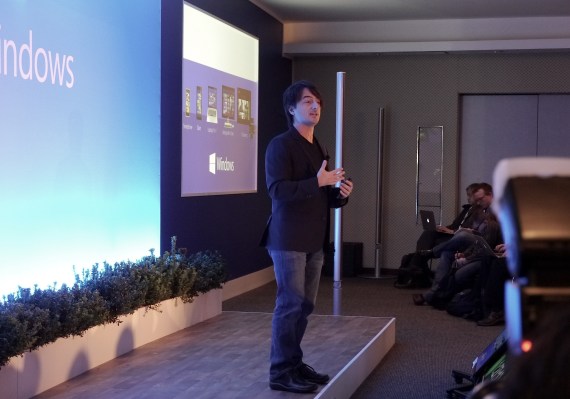Today at Mobile World Congress in Barcelona, Microsoft kicked off the action with a step that points to the company’s ambitions to continue to press ahead with its multi-hardware strategy, and to do it without leaving too many legacy Windows users behind. Joe Belfiore, head of platform at Microsoft covering phones, tablets and PCs, confirmed that a Windows 8.1 update coming this spring will be shifting its focus to be more accessible on non-touch devices, a wider range of hardware, and customizations that will be more friendly to the education and enterprise sectors.
But don’t call this a recall of touch: “None of the work we are doing has a negative effect on the touch experience at all,” Belfiore said. “We love touch.”
He said that the update will be coming “this spring”, with no more specific shipping date.
Also included, as people have reported, will be a return of a “start” button and screen along with discoverable search and power, and more mouse and key-board friendly features.
Belfiore noted that while Windows 8 was, in the words of Belfiore, a “significant” update for Microsoft (with its touch UI, new folder architecture and so on), 8.1 will be a return to some of the older features that preceded it.
“Some of these things leak and you can imagine how it feels to see people writing and speculating, so I want to set the record straight,” Belfiore said. “We love touch.”
Since Windows 8 launched, Microsoft says that it has seen 200 million Windows 8 licenses sold; Windows 8 / 8.1 collectively have a larger market share than all versions of OSX; 40% of windows 8 devices sold in the US are touch enabled; and over 4 million app downloads.
Mobile Hardware
While Microsoft continues to work through its acquisition of Nokia’s devices business, today the company made a big play to talk about how it is working to expand the wider ecosystem beyond that Nokia business that it will be getting. Belfiore admitted that Microsoft may not have been the winner everywhere — the US “is a tough market for us”, he said — but he described 2013 also as “the year we ate our vegetables”. What does that mean? I *think* he was talking about the slog that Microsoft has gone through to roll out devices into different markets, some 91 in all currently, and across a wider range of price points.
Today, he gave a preview of the Windows Phone update that Belfiore says will see the platform extend to a new range of devices, starting first with being able to support the Qualcomm Snapdragon 200, 400 and 400 LTE devices. This will see the platform go to a wider range of devices into lower and lower price points.
Also, Windows Phone will add in significantly more flexibility in how keys are implemented, with features like the camera button optional and other, unspecified “flexible hardware requirements”, and the introduction of other softkeys. It will also support a dual SIM in new devices, which will make the platform more friendly to certain markets like China where double-SIM ports are popular.
Nick Parker, the OEM lead at Microsoft, also underscored how Microsoft does not want to be pigeonholed as a hardware maker in its own right that will swamp the market. Microsoft, he said, is now “open for business” for “all partners.” The company has now launched a new site specifically to cater to the OEM community. That site holds OEMs’ hands through “why you would want to build a Windows Phone” and looks like the biggest move the company has made to date to appeal to handset makers, as well as others like carriers who might work with OEMs to develop white-label devices.
Those who have signed up with Microsoft in this endeavor include Foxconn, LG and Qualcomm, as well as Lenovo, ZTE, and HTC.
Effectively what you can see developing here is a dual strategy at Microsoft: one of its own-branded devices, and one using the same platform to pursue an Android-like, as-ubiquitous-as-possible “platform for profit” (in Curtis’ words). The big question will be wither it work for Microsoft to push two strategies that will effectively compete against each other.

